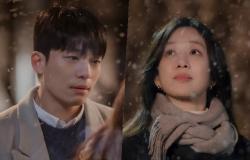Hear
ROME.- Latin America and Europe, linked through different codes and spaces, with the sun as the protagonistto. That’s how it is Ospitethe second Roman solo exhibition of the young Argentine artist, Matías Ercolewhich for the first time created nine works site specificthat is, designed especially for Spazio Nuovoa gallery in the historic center of the eternal city, launched more than ten years ago by the Argentinean Paulo Pérez Mouriz and the Frenchman Guillaume Maitre.
In Italian the word “ospite” has a double meaning: it refers not only to the one who hosts, but also to the one who is hosted.something that does not happen in Spanish with the word “guest”, which does not have this duplicity and which is the main idea of Ercole’s original works, Pérez Mouriz explained to LA NACION.
For more than two years, in fact, This Buenos Aires artist, who moved to Rome but never left Buenos Aires, feels “ospite” in Italywhere their Latin American identity began to coexist with European art.
Playing with the word “ospite”, Ercole made a series of intricately crafted sgraffitoeslayer after layer of disturbing spaces, where deep voids alternate with a vegetation that belongs to their imaginary of origin and their ancestral memoryl. But all the works this time have the indelible mark of a dialogue with classical art with whom the artist lived in recent years and with pictorial references of Latin American art.
So much so that The colors, which for the first time are not just black and white, also reflect that link. They could be palettes from some Quattrocento artist, evoke some illustrated texts at the dawn of typography or present chromatic intensities of the great Mexican muralists or the green ones that rescued the illustrations of traveling artists in America, such as those of Johann Moritz Rugendas at the beginning. of the 19th century.
Ercole also has as a reference the sun, as a symbol that belongs to all cultures and strongly crosses several meanings. Perhaps, a way to reconcile the two worlds to which it belongs, since appears in all his works.
The architectural space of the prestigious Spazio Nuovo gallery on Via d’Ascanio led Ercole to project a series of large paintings that alternate with other small ones (the smallest is 20×20 cm, untitled), in exquisite works of design and color that, if you squint, evoke a Rembrandt.
In dialogue with LA NACION, Ercole explained that his references during his student days and when creating many of his works were -almost always and “also unconsciously”- classical painting, naturalism, romantic painting. And that in the decision and moment of creating these works, that past “entered into crisis”.
However, each work has a meaning. The initial, which is the largest – measuring 290×180 cm, leans and advances towards the spectators – is titled “And now that I miss the sun”. It raises the idea of a black sun or the very absence of the star on stage.
“I am interested in thinking about paint as an active agent.somehow denying its condition as an illusionist window, to create with it an interaction-intrusion with the architectural space that houses it… The central character, protagonist and investigative point is the sun, presenting itself in its lighting and formal possibilities and in its cultural bodily changes – says Ercole -. I was interested in linking multiple forms of drift through it, from Latin America, Africa and Europe, presenting new syncretic spaces and territories of those worlds and their tensions.”
The surprise of this new Roman exhibition is that there is also an installation: a door covered in drawings that invites us to transgress and go through the mirror like the Alice of childhood, on whose handle Argentine coins are hung. “The door It is a symbolic element and the intermediate meeting point between two realities.which is the common denominator of this exhibition: a sign of a strong current sense of identity, that of being Latin American while in Europe, and also a reflection of the complexity of a composite identity,” he stated.
Benedetta Casini, curator invited to write the text that accompanies the exhibition, highlighted Ercole’s compositional technique, which “initially evenly covers the surface with a pictorial layer that defines a priori the chromatic qualities of the representation; and then she intervenes on this occluded background by removing the material with the help of scraping tools (some are the product of ingenious inventions, others are simple household objects, such as steel abrasive sponges)”. “The result is negative drawingsforms that emerge with different intensities from a common substrate,” described Casini.
At the inauguration of Ospite, a few days ago, several contemporary artists were present. Among them the compatriot Ines Fontenlawho did not hesitate to define Ercole as “a very talented artist, who is going to have a great career”.






